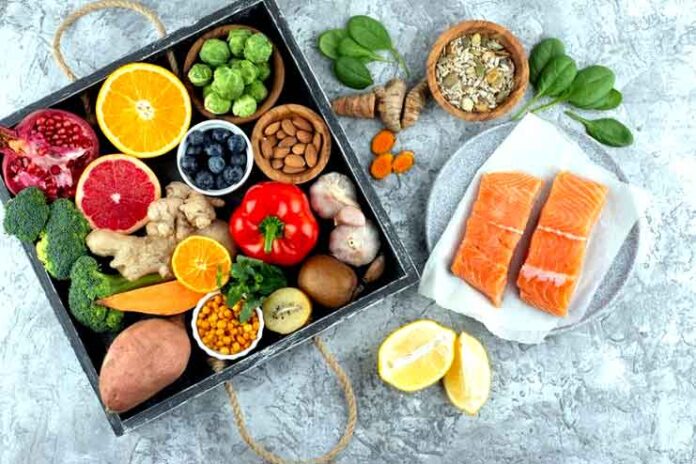Affiliate Disclaimer
Some links in this article are affiliate links. We may earn a small commission if you make a purchase through these links, at no extra cost to you. We only recommend products we find useful to our readersHormones are crucial conductors in the complex web of women’s health, impacting many physiological processes. These chemical messengers substantially influence mood regulation, reproduction, and general well-being.
Maintaining ideal health throughout a woman’s life requires understanding the delicate hormone balance. Hormones shape the delicate dance of the female body from puberty to menopause.
In this situation, it is impossible to exaggerate the significance of a balanced diet. In addition to maintaining general health, providing the body with the necessary nutrients is crucial for fostering hormonal balance. This article explores hormones’ vital function in women’s health and emphasizes how important a balanced diet is to maintaining hormonal balance.

Understanding Hormonal Health

Overview of Women’s Hormones
A complex interplay of essential hormones regulates women’s hormonal health. Each hormone plays a distinct role in maintaining overall well-being.
- Estrogen regulates the menstrual cycle, bone health, and cardiovascular function. It is also the primary hormone that controls sexual activity in females.
- Progesterone is another essential component, acting as a hormone that promotes pregnancy and assists in regulating the menstrual cycle.
- Even though testosterone is more commonly associated with men, it also has a role in the health of women, impacting both their energy levels and their libido. Maintaining a delicate balance of hormones is necessary for reproductive health, emotional stability, and physical vitality.
The Impact of Hormonal Imbalance
Disturbances in the delicate hormonal balance might have significant impacts on a woman’s health.
Symptoms of hormonal abnormalities include mood swings, irregular menstrual periods, and chronic exhaustion. Osteoporosis, cardiovascular disease, and problems with fertility can all be attributed to estrogen dominance or lack.
Unbalanced progesterone levels might cause irregular periods or make conception difficult. Changes in testosterone can affect sexual health and energy levels.
Identifying the symptoms of hormone imbalance is critical to taking prompt action and preserving optimum health. In this investigation of hormonal health, we examine the possible effects of imbalances and provide insight into how to maintain and manage hormonal homeostasis for general well-being.
Top 8 Hormone-Balancing Foods
1. Flaxseeds: Omega-3 Powerhouse
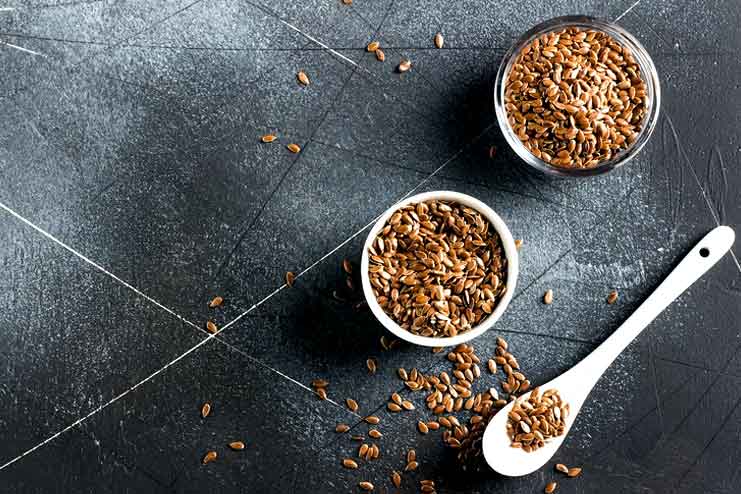
The Omega-3 Connection
Flaxseeds are a nutritional powerhouse, mainly because of their abundance of omega-3 fatty acids. These essential fats contribute to the delicate balance required for women’s health and play an important role in the mechanism that supports hormone production.
Flaxseeds are a rich source of omega-3 fatty acids, which are used as hormone building blocks. These chemicals help ensure that estrogen, progesterone, and testosterone work together in a balanced manner.
Furthermore, these fatty acids demonstrate their anti-inflammatory capabilities, which contribute to reducing inflammation associated with hormonal abnormalities. Incorporating flax seeds into one’s diet is a natural and fruitful technique that has proven successful when it comes to promoting hormonal health and overall well-being.
Ways to Incorporate Flax Seeds
Including flax seeds in your diet regularly is easy and gratifying.
- To give your morning routine an extra nutritional boost, you can incorporate powdered flaxseeds into a nutritious smoothie or sprinkle them over yogurt.
- Adding flaxseeds to salads, cereals, and homemade granola bars is simple because of their mildly nutty flavor, which goes well with various foods.
- Combine crushed flaxseeds, nuts, honey, and dried fruits to make flaxseed energy bites and bite-sized treats. These are tasty and healthy snacks.
Including flax seeds in your diet improves the flavor of your food and provides the omega-3 support necessary to keep your hormones in optimal balance.
Related Article: Reasons for Butt Cramps Over Periods – Relieve for Proper Solutions
2. Avocado: Healthy Fats for Hormones
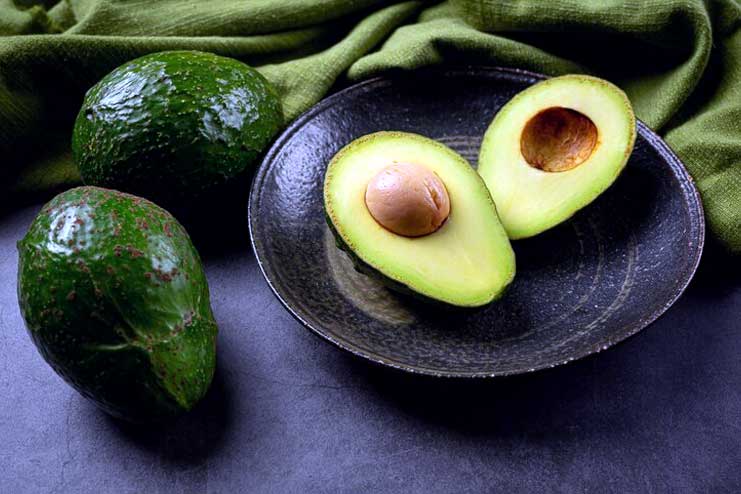
Monounsaturated Fats and Hormonal Support
Avocados, well-known for their velvety texture and creaminess, stand out as a nutritious ally for maintaining hormonal balance. Avocados, rich in monounsaturated fats, are essential in encouraging the creation of hormones and maintaining hormonal equilibrium. These heart-healthy fats provide a basis for manufacturing hormones, particularly those that drive reproductive activities. They are also beneficial to the cardiovascular system.
Furthermore, monounsaturated fats help maintain steady blood sugar levels, alleviating the risk of insulin spikes that can upset hormonal equilibrium. By including avocados in their diet, people can nurture their endocrine system and improve general well-being. Avocados support vital hormonal functions essential for maintaining overall health.
Creative Avocado Recipes
The adaptable avocado will enhance your meals and support your hormones.
- Toss ripe avocado chunks with nutrient-dense greens and a scattering of seeds for a variation on hormone-balancing salad dressings.
- Make a filling turkey and avocado sandwich to give your lunch a healthy dose of monounsaturated fats.
- For a tasty and hormone-friendly breakfast, spread avocado on whole-grain toast using a creative masher incorporating a dash of lemon.
- Try an avocado and salmon bowl made with quinoa, leafy greens, and grilled salmon to enhance your hormonal well-being and tickle your taste buds. This dish is a complete hormone-balancing cuisine.
Accept the creamy avocado richness to fuel your body and effortlessly keep your hormones balanced.
3. Broccoli: Cruciferous Powerhouse
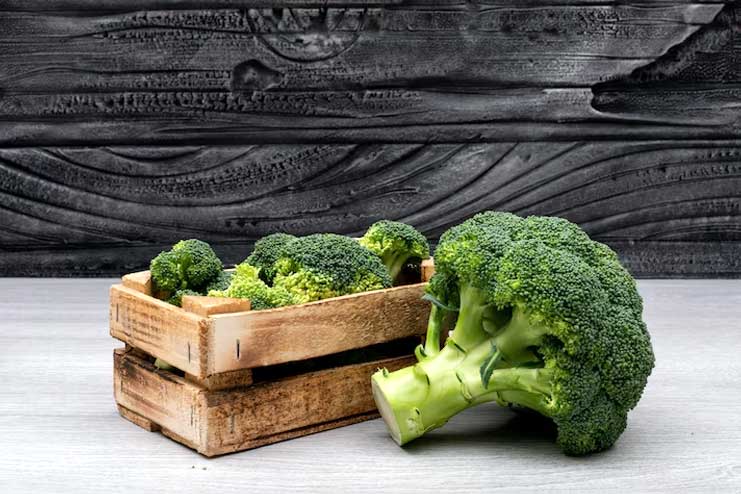
Indole-3-Carbinol and Hormone Metabolism
Broccoli, which belongs to the family of cruciferous vegetables, reveals its ability to maintain hormonal equilibrium through the presence of indole-3-carbinol. This potent molecule plays a critical function in influencing the metabolism of hormones, notably estrogen. By regulating estrogen metabolism within the body, indole-3-carbinol contributes to maintaining a healthy estrogen balance.
In addition to assisting in the transformation of estrogen into more advantageous forms, broccoli helps lessen the likelihood of estrogen-related abnormalities occurring. Eating broccoli regularly offers a delightful and natural way to reap the benefits of indole-3-carbinol, which contributes to maintaining hormonal equilibrium and overall well-being.
Delicious Ways to Enjoy Broccoli
Adding broccoli to your culinary arsenal is advantageous and provides a delightful taste experience.
- Roasting broccoli with a drizzle of olive oil and a sprinkling of your preferred herbs enhances its natural taste, resulting in a savory side dish or snack.
- When steamed, broccoli maintains its brilliant color and nutritional value, making it an easy and nutritious complement to any meal.
- You can add a burst of flavor to your stir-fries by tossing broccoli florets with a variety of colorful veggies and protein sources.
Broccoli’s versatility makes it simple to take advantage of its hormone-balancing properties in a manner suitable for your taste and lifestyle, whether you consume it as a side dish on its own or as a versatile ingredient in various cuisines.
4. Wild-Caught Salmon: Rich in Vitamin D
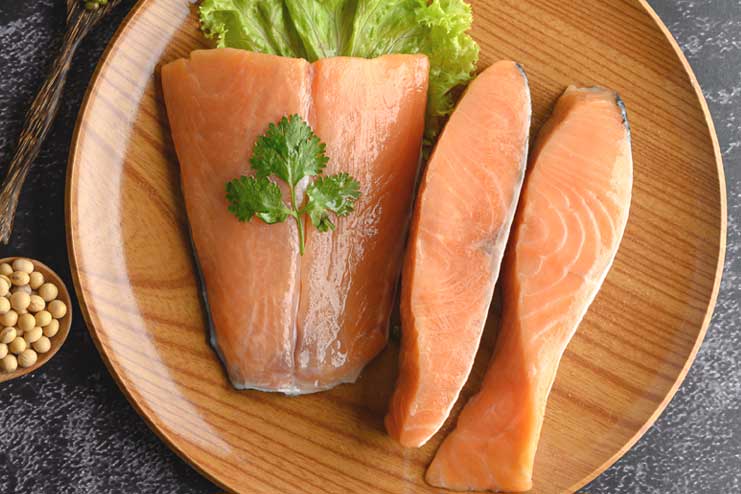
The Vitamin D and Hormone Connection
Salmon fished in the wild is not only a nutritious and delicious seafood alternative but also a good natural source of vitamin D, essential for maintaining hormonal health. One of the most important functions of vitamin D is to regulate hormones, which helps maintain a state of equilibrium within the endocrine system. This crucial vitamin is well known to influence the production of hormones such as estrogen and testosterone, and it also plays a role in ensuring the proper functioning of the parathyroid glands.
It is important to note that adequate vitamin D levels are linked to improvements in mood, bone health, and immune function, highlighting vitamin D’s significance in maintaining general well-being. Consuming wild-caught salmon, which is tasty, can increase the amount of vitamin D consumed and promote hormonal homeostasis.
Cooking Tips and Recipe Ideas
Consider these cooking tips to enjoy the hormone-balancing advantages of wild-caught salmon.
- Salmon retains its natural flavors and nutrients when baked or grilled with a light herb and lemon marinade.
- For a quick and healthy lunch, try pan-searing salmon fillets and serving them with a colorful salad full of hormone-friendly veggies.
- Take your cooking to the next level by using salmon in a hormone-balancing dish like quinoa and salmon bowl. This dish is a tasty and nutritious combination of flaked wild-caught salmon, quinoa, and leafy greens, finished with olive oil.
For those looking for a tasty way to support hormonal well-being, embracing the hormonal benefits of wild-caught salmon becomes an enticing and health-conscious option with these cooking ideas and recipes.
5. Chia Seeds: Hormone-Friendly Superfood
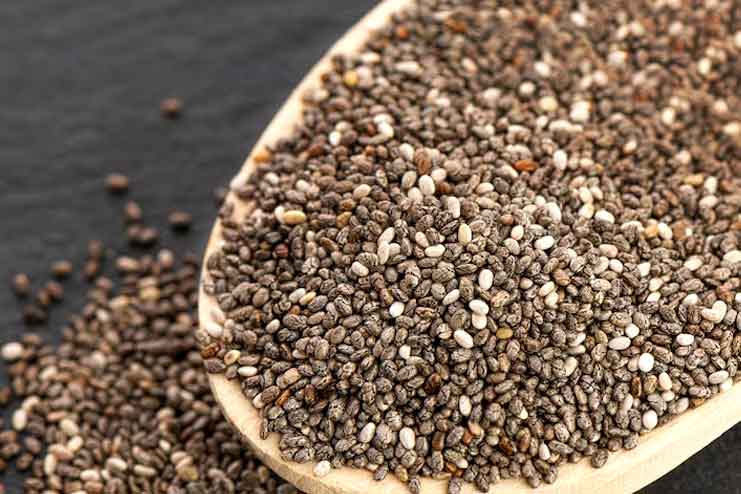
Omega-3s and Fiber in Chia Seeds
Chia seeds are a hormone-friendly superfood with a unique blend of soluble fiber and omega-3 fatty acids. These tiny seeds are essential for hormone balance because they are high in alpha-linolenic acid (ALA) and omega-3 fatty acids. Omega-3 fatty acids support general endocrine health and are necessary for hormone synthesis.
Chia seeds’ soluble fiber helps to stabilize blood sugar levels by averting the spikes and crashes that can upset hormonal balance. Adding chia seeds to the diet may support hormonal balance and general well-being in addition to reaping the benefits of omega-3s and a consistent supply of energy.
Easy Ways to Include Chia Seeds
It’s easy and flexible to incorporate chia seeds into your everyday meals.
- For a wholesome and filling breakfast or snack, combine chia seeds with your preferred milk to make a delectable pudding that will set overnight.
- Add a teaspoon of chia seeds to your smoothies to boost their nutritional value, give them a lovely texture, and give them a punch that’s good for your hormones.
- Try this recipe for a chia seed and berry smoothie bowl for hormone balancing. Blend chia seeds with yogurt, mixed berries, and a drizzle of honey to make a delicious and hormone-nurturing treat.
Because of their distinct nutritional profile, Chia seeds provide a simple and pleasurable way to support hormonal balance as part of a well-rounded diet.
6. Berries: Antioxidant-Rich Support
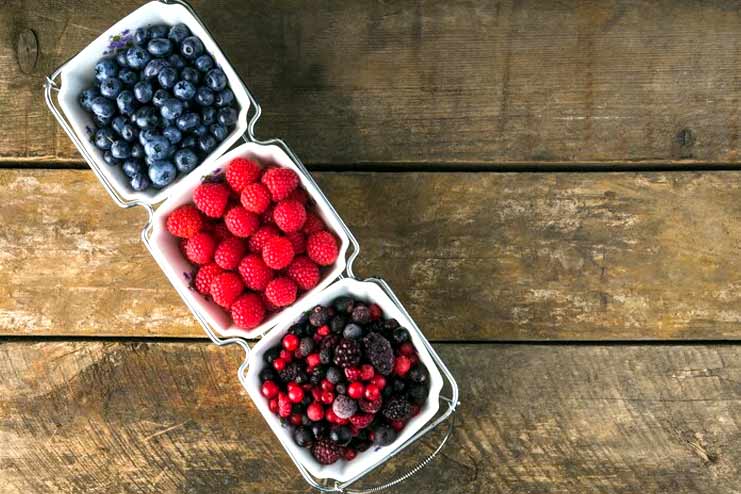
Antioxidants and Hormonal Health
Berries are the colorful gems of the fruit kingdom that provide more than just delicious flavors. Because of their high antioxidant content, berries are powerful partners in promoting hormonal health. Antioxidants are essential for preventing oxidative stress, which can upset the balance of hormones.
Antioxidants in berries help protect hormone-producing glands and support their best possible functioning by scavenging free radicals. These vibrant fruits should be a part of your diet to protect your body from oxidative damage and to keep your endocrine system functioning properly. This is because antioxidants and hormonal health are related.
Enjoying Berries in Various Forms
Not only is it simple to include berries in your diet daily, but it is also a pleasant and tasty activity.
- Blending berries creates a revitalizing smoothie that will boost your morning routine with antioxidants.
- Adding a handful of berries to your salads gives them a delectable and nutrient-rich twist.
- You can eat a bowl of fresh berries as a simple and satisfying snack, or you can combine them with yogurt to boost the creaminess of the snack.
- For a dish that can help you achieve hormonal equilibrium, try making a mixed berry parfait. This delicious and wholesome dessert is made by layering granola, Greek yogurt, and berries.
Embrace berries’ versatility. Their rich antioxidant content makes them an excellent addition to meals and snacks and can support hormonal balance.
7. Almonds: Nutrient-Dense Hormonal Support
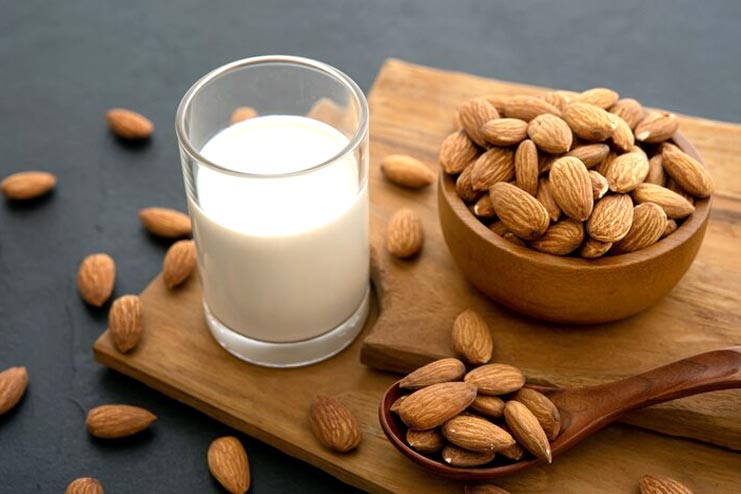
Nutrients in Almonds for Hormonal Harmony
Almonds, which are tree nuts packed with nutrients, are a potential powerhouse for regulating hormonal balance because of the rich profile of critical elements they contain. One of the most essential factors in maintaining hormonal health is vitamin E, a powerful antioxidant found in almonds. Additionally, it helps shield cells from the damaging effects of oxidative stress, which contributes to the overall health of hormone-producing glands.
Furthermore, magnesium, found in reasonable quantities in almonds, is essential for various enzymatic processes, including those involved in producing and regulating hormones. Incorporating almonds into your diet ensures that you will receive a consistent supply of these vital nutrients, which helps to promote hormonal harmony and provides support for the complicated balance of the endocrine system.
Snacking and Cooking with Almonds
It is not only practical but also pleasurable to incorporate almonds into your diet daily.
- For a filling and nutrient-dense energy boost, munch on some almonds.
- To bring almonds into your diet, toss them into salads for a delicious crunch and a boost of nutrients.
- Try this recipe for almond-crusted baked chicken, which coats chicken breasts in crushed almonds and bakes them into a delightful and nourishing main dish. It’s great for regulating hormones.
- Add chopped almonds to your yogurt or porridge in the morning to boost its nutritional value and taste.
Almonds, due to their versatility and nutrient density, are a delicious way to support hormonal health and are a vital complement to a well-rounded, hormone-friendly diet.
8. Turmeric: Anti-Inflammatory Spice
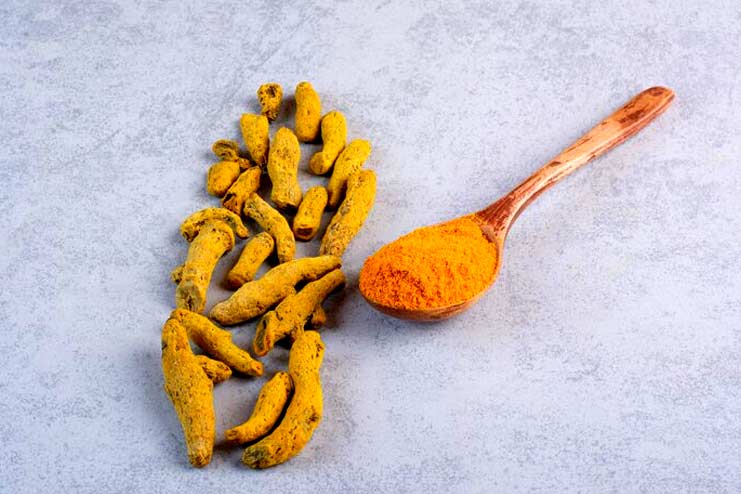
Curcumin’s Impact on Inflammation and Hormones
Curcumin, the main component of turmeric, is responsible for its super powerful anti-inflammatory qualities. When it comes to maintaining hormonal equilibrium, curcumin has been recognized for its capacity to reduce inflammation, which plays a crucial role in the process. Curcumin maintains a harmonious environment for generating and controlling both hormones through its ability to modulate inflammatory pathways.
Conditions such as premenstrual syndrome (PMS), in which inflammation can exacerbate hormonal imbalances, may also benefit from its potential benefits. When you incorporate turmeric into your diet, you can take advantage of curcumin’s anti-inflammatory properties, promoting general hormonal health and alleviating symptoms linked with variations in hormone levels.
Adding Turmeric to Your Diet
Using turmeric in your culinary repertoire is both straightforward and beneficial.
- Adding turmeric to stews, soups, and curries improves the flavor of your meals. Additionally, turmeric imparts a warm and earthy undertone to the dish.
- You can make a calming cup of turmeric tea by steeping grated turmeric in hot water.
- Indulge in trendy golden milk, a soothing beverage made from turmeric, milk, and spices.
- Try a turmeric-spiced roasted vegetable bowl for a recipe to help you achieve a more balanced hormone profile. Toss the colorful veggies with turmeric, olive oil, and your preferred herbs, and then roast them to create a healthy and anti-inflammatory dish.
When you creatively include turmeric in your diet, you improve your food’s flavor and take advantage of its anti-inflammatory characteristics, which contribute to hormonal equilibrium and overall well-being.
Conclusion
One cannot stress the importance of including foods that balance hormones in your diet. These dietary partners greatly support hormonal balance, with turmeric’s anti-inflammatory properties and the high omega-3 content of wild-caught salmon playing key roles. By understanding the effects of particular nutrients, anti-inflammatory substances, and antioxidants, we can open the door to a comprehensive state of well-being.
Start this journey by making simple, sustainable dietary changes, like including chia seeds in your morning smoothie or savoring an almond-crusted chicken that balances hormones. These small changes create resilience and balance in the complex dance of your endocrine system, paving the path for long-term hormonal health. Select food that will satisfy your palate and give your body long-lasting energy.
Reference
https://www.medicalnewstoday.com/articles/324887#menopause
https://www.everydayhealth.com/hormones/guide/
https://hormonehealth.co.uk/10-warning-signs-you-may-have-a-hormonal-imbalance-and-what-to-do-about-it#:~:text=Hormonal%20imbalances%20may%20be%20to,too%20little%20of%20a%20hormone.
https://www.medicalnewstoday.com/articles/321486#:~:text=Hormonal%20imbalances%20occur%20when%20there,glands%20in%20the%20endocrine%20system.
https://www.mountsinai.org/health-library/herb/flaxseed
https://www.healthline.com/nutrition/foods/flaxseeds
https://www.wikihow.com/Add-Flaxseed-to-Your-Diet
https://www.webmd.com/diet/features/benefits-of-flaxseed
https://www.healthline.com/nutrition/benefits-of-flaxseeds#TOC_TITLE_HDR_6
https://www.hsph.harvard.edu/nutritionsource/avocados/#:~:text=The%20primary%20type%20of%20monounsaturated,%2C%20avocados%20are%20cholesterol%2Dfree.
https://www.medicalnewstoday.com/articles/is-avocado-good-for-cholesterol
https://www.bonappetit.com/recipes/slideshow/40-avocado-recipes-so-you-can-eat-as-much-avocado-as-possible
https://www.healthline.com/nutrition/23-ways-to-eat-avocados#TOC_TITLE_HDR_5
https://www.thespruceeats.com/avocado-sandwiches-2937610
https://www.ncbi.nlm.nih.gov/pmc/articles/PMC9091758/#:~:text=I3C%20is%20naturally%20found%20in,to%20release%20I3C%20%5B4%5D.
https://www.ncbi.nlm.nih.gov/pmc/articles/PMC5989150/
https://www.budgetbytes.com/broccoli-recipes/
https://www.tasteofhome.com/collection/superstar-broccoli-recipes-even-picky-eaters-will-love/
https://www.ncbi.nlm.nih.gov/pmc/articles/PMC6566758/
https://www.healthline.com/nutrition/salmon-nutrition-and-health-benefits
https://thechalkboardmag.com/how-to-cook-wild-salmon-recipes/
https://cookloveheal.com/baked-wild-salmon/#:~:text=Bake%20at%20Lower%20Temperature%20to,for%20a%201%20pound%20fillet.
https://labwellhealthcare.com/hormone-hack-chia-seeds/#:~:text=Soluble%20fiber%20helps%20reduce%20LDL,for%20those%20with%20hormone%20imbalances.
https://www.healthline.com/nutrition/chia-seeds
https://www.healthline.com/nutrition/35-ways-eat-chia-seeds
https://www.timesnownews.com/lifestyle/exciting-ways-to-incorporate-chia-seeds-into-your-daily-diet-article-100695942
https://www.healthline.com/nutrition/foods-high-in-antioxidants#TOC_TITLE_HDR_7
https://www.medicalnewstoday.com/articles/322693#seven-benefits
https://www.healthline.com/nutrition/11-reasons-to-eat-berries#TOC_TITLE_HDR_2
https://www.twopeasandtheirpod.com/berry-banana-smoothie-bowl/
https://www.hsph.harvard.edu/nutritionsource/food-features/almonds/#:~:text=It%20is%20a%20calorie%2Ddense,carbohydrate%2C%20and%203%20grams%20fiber.
https://www.realsimple.com/almonds-health-benefits-6835790
https://www.welovecycling.com/wide/2023/01/06/eating-almonds-can-help-you-reduce-calorie-intake/
https://www.medicalnewstoday.com/articles/does-snacking-on-almonds-help-curb-hunger
https://www.ncbi.nlm.nih.gov/pmc/articles/PMC8471428/
https://www.healthline.com/nutrition/top-10-evidence-based-health-benefits-of-turmeric
https://www.thekitchn.com/7-ways-to-eat-drink-turmeric-198696
https://www.simplyquinoa.com/how-to-use-turmeric-in-cooking-baking/
In this Article















